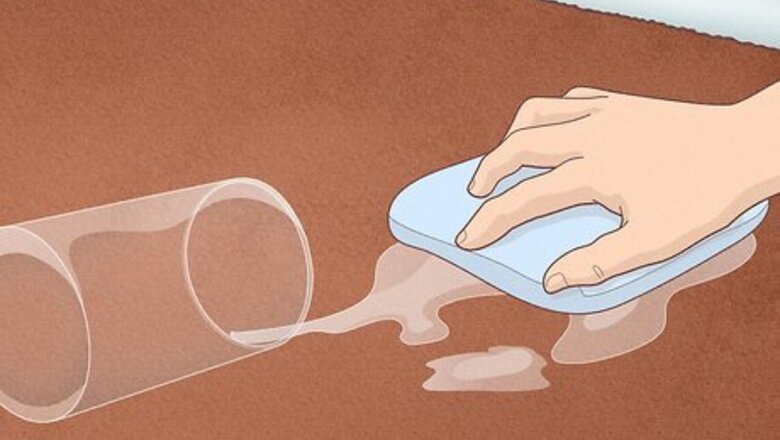
views
Cleaning a Wet Milk Stain

Blot up as much milk as you can while the stain is fresh. Use a clean cloth and light pressure to dab off the milk without rubbing or pressing the liquid deeper into the carpet. Wring out the cloth occasionally to extend its use or use multiple cloths for maximum absorption. Dampen the stain with cold water and a cloth or a spray bottle to keep it from drying out. Driving the stain deeper into the carpet makes it harder to clean and more likely to smell later.
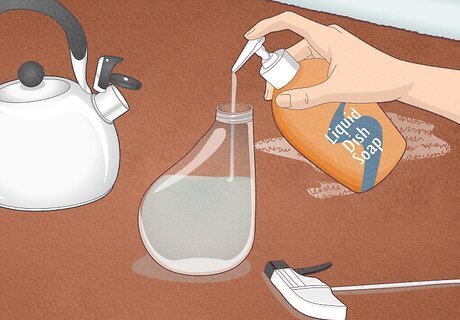
Mix 2 cups (473 mL) of warm water and 1 tablespoon (15 mL) of liquid dish soap. Combine the ingredients in a small bowl or a spray bottle. Stir to evenly distribute the dish soap. If possible, prepare the cleaning solution before the stain has dried for easier removal. Alternatively, make a mixture of one part water and one part distilled, white vinegar. Vinegar is great for deodorizing and breaking down natural stains.

Apply the dish soap mixture to the stain. If you’re using a spray bottle, spray the stain until it’s damp with your cleaning solution. If you mixed it in a bowl, soak a clean cloth in the solution and use it to dab at the stain. Let the mixture cover an area slightly larger than the stain to make sure you’re getting it all.

Blot the stain with a clean cloth until it disappears. Start blotting at the outside edges of the stain and work your way inwards. Remember to apply light pressure to avoid smearing or pressing the stain deeper into the carpet. Reapply your cleaning mixture as necessary. Continue applying solution and blotting until the stain is no longer visible or until the liquid running off your cloth when you wring it out is clear.

Apply a mixture of water and ammonia if the stain is persistent. Combine 2 cups (473 mL) of warm water and 1 tablespoon (15 mL) of ammonia in a small bowl. Use a clean sponge or cloth and blot the stain until the liquid is absorbed. Continue blotting until you’ve removed the milk stain entirely. Do not mix ammonia with bleach or any products containing bleach. When they mix, they create harmful fumes. Alternately, make your own solution of ammonia, water, and dish soap.
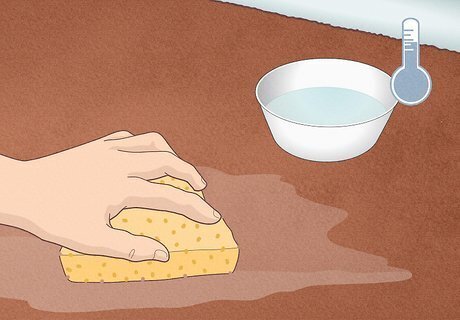
Rinse the stain with cold water and pat dry. Dab a clean cloth or sponge soaked in cold water onto the carpet to rinse away any remaining cleaning solutions. Once it’s rinsed, pat the area dry with a towel. A wet/dry vac will also work for removing liquids from your carpet.
Cleaning a Dried Milk Stain
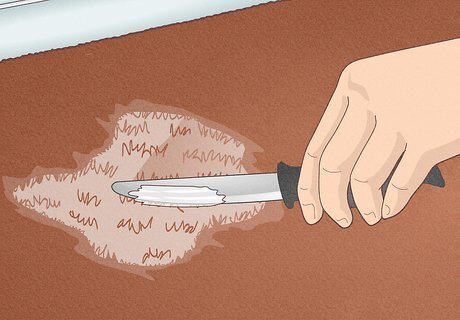
Scrape away any dried or hardened milk residue. Use a dull knife to scrape or flake away any dried milk, then clean up the flakes with a cloth or vacuum. Remove as much of the hardened milk as you can to make the rest of the cleaning process easier.
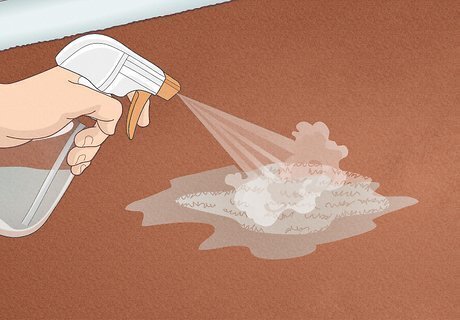
Wet the stain with cold water. Use a spray bottle, or dampen a clean cloth with cold water and dab at the stain to moisten it. This will loosen the old milk out of the carpet fibers and keep the stain from drying out again. Always use cold water since heat causes the proteins in the milk to “cook” into the carpet fibers. This sets the stain and makes it harder to fully remove.

Create a paste of cold water and laundry detergent. Combine cold water and laundry detergent (liquid or powdered) in a bowl to form a fine, silky paste. Be sure to use cold water since heat will set the stain even more strongly into the carpet.
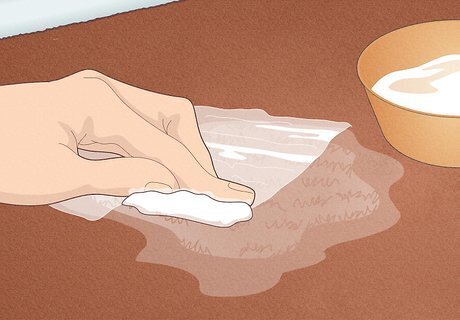
Rub the paste into the stain with your fingers or a toothbrush. Apply enough detergent paste to fully cover the stain (let it flow a little over the borders of the stain to be thorough). Rub from the outside of the stain and work your way in toward the center.

Rinse the detergent and milk away with cold water. Once the stain is no longer visible, soak a clean cloth in cold water and rub the stain for several minutes to remove any last drops of cleaning solution or milk. Keep rinsing until the detergent is gone—when you wring out your cloth, the water should be clear and have no bubbles.

Pat the area dry with a clean towel. Use cloths or paper towels to absorb as much water from the carpet as you can. After blotting, allow the stain to fully air dry. Damp carpet traps dirt and bacteria, so it’s important to dry it thoroughly for the long term health of your carpet.
Getting Milk’s Smell Out of Carpet
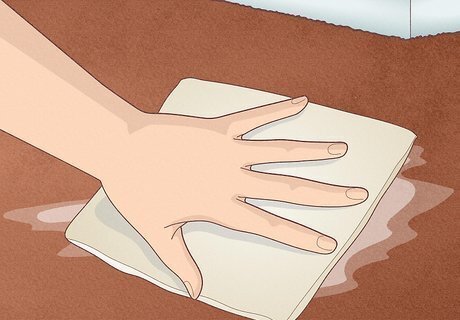
Blot as much of the milk as you can if the stain is still wet. Grab a paper towel or a cloth and press it into the spill. Be careful not to rub or press too hard and accidentally drive the milk deeper into the carpet. If the stain has fully dried, just use a dull knife to scrape off any hardened milk and then lift or vacuum up the pieces instead of blotting.
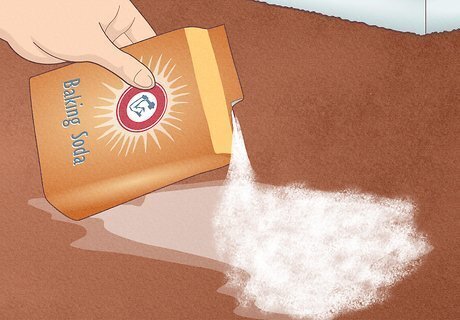
Pour cornstarch or baking soda over the stain liberally. Either of these powders work as a deodorizer and can also lift any remaining milk out of the carpet if it’s still damp. Make sure the entire stain is covered in a fairly thick layer for the best results. If there is a milk smell but no visible stain, use dry coffee grounds as a substitute.
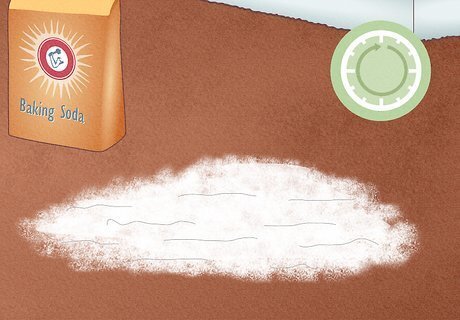
Let the cornstarch or baking soda sit for several hours. If the stained area is still damp, the smell may go away after about 10 minutes or so. If it’s dry, the deodorizing will take several hours. For the most thorough smell removal, let the powder sit overnight. If you’re deodorizing with coffee grounds, let it sit for no more than a few hours since the grounds have an odor as well.
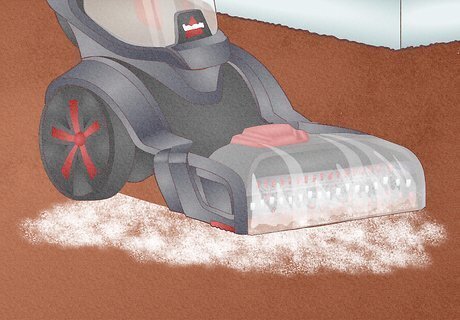
Vacuum up the cornstarch or baking soda once it’s dried. First, use a spoon or your hands to pick up as much powder as you can, then go over the stain with a vacuum cleaner. Be thorough—saturated powder will attract dirt and bacteria if it’s left in the carpet.
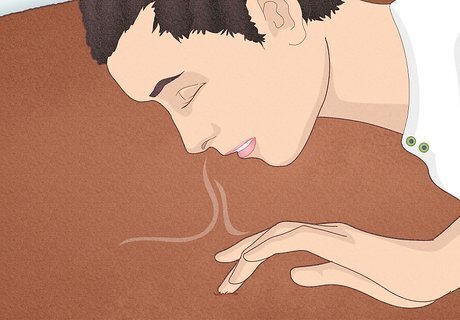
Inspect the stain for cleanliness and smell. The carpet should feel clean to the touch and there should be little to no milk odor. If the stain or the smell aren’t fully gone, make sure the carpet is completely dry and then repeat the entire process.
















Comments
0 comment